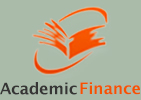Les Déterminants de l’inclusion financière et l’impact du COVID-19 en Amérique latine et dans les caraïbes
DOI :
https://doi.org/10.59051/joaf.v15i3.697Mots-clés :
financial inclusion, Latin America and the Caribbean (LAC), individual characteristics, and COVID-19Résumé
Objectif : L'étude examine les déterminants de l'inclusion financière et l'impact du COVID-19 en Amérique latine et dans les Caraïbes pendant la pandémie.
Méthodologie : elle utilise la base de données du Global Findex 2021 de la Banque mondiale, collectée pendant la pandémie de COVID-19 dans huit pays des Caraïbes, pour exécuter une régression logit afin d'étudier les déterminants et la manière dont la COVID-19 a influencé l'inclusion financière.
Résultats : Concernant les principaux déterminants, l'étude a révélé que les femmes et les individus des groupes à faible revenu ont un faible taux d'exclusion financière, bien que l'inclusion financière augmente avec l'augmentation des revenus.
Originalité du document : L'étude a utilisé des données collectées à l'époque du COVID-19 pour étudier comment la pandémie a affecté l'inclusion financière, ce qui est une des premières du genre.
Téléchargements
Références
Allen, F., Demirgüc¸-Kunt, A., Klapper, L., Peria, M.S.M., (2016). The foundations of financial inclusion: understanding ownership and use of formal accounts. J. Financ. Intermed.
Amemiya, T. 1981, ‘Qualitative Response Models: A Survey’, Journal of Economic Literature, 19 (4), 1483–1536.
Andersson-Manjang S, K,. and Naghavi, N,. (20321). The State of the Industry Report on Mobile Money 2021, GSM Association
Aterido, R., Beck, T., Iacovone, L., (2013). Access to finance in Sub-Saharan Africa: is there a gender gap? World Dev. 47, 102–120.
Bateman, M., Duvendack, M. and Loubere, N. (2019) ‘Another False Messiah: The Rise and
Rise of Fin-tech in Africa’, ROAP Publications. Available at:
http://lup.lub.lu.se/record/a2df603c-7e0e-4722-af45-5e8be9a558a1 (Accessed: 30 August
.
Beck, T., A. Demirguc-Kunt and R. Levine (2007) ‘Finance, Inequality and the Poor’, ¨ Journal of Economic Growth 12(1): 27–49.
Cramer, J. S. 2007. Robustness of Logit Analysis: Unobserved Heterogeneity and Mis-specifies Disturbances. Oxford Bulletin of Economics and Statistics, 69 (4), 545–555.
Dabla-Norris, M.E., Ji, Y., Townsend, R. and Unsal, D.F., 2015a. Identifying constraints to financial inclusion and their impact on GDP and inequality: A structural framework for policy (No. 15-22). International Monetary Fund.
Dabla-Norris, M. E., Deng, Y., Ivanova, A., Karpowicz, I., Unsal, F., VanLeemput, E., and
Wong, J., 2015b. Financial Inclusion: Zooming in on Latin America (No. 15-206). International Monetary Fund
Demirgüc¸-Kunt, A., Klapper, L., (2012a). Financial Inclusion in Africa. An Overview (Policy Research Working Paper No. 6088). The World Bank, Washington, DC.
Demirgüc¸-Kunt, A., Klapper, L., (2012b). Measuring Financial Inclusion. The Global Findex Database (Policy Research Working Paper No. 6025). The World Bank, Washington, DC.
Demirgüc¸-Kunt, A., Klapper, L., Randall, D., (2013). Islamic Finance and Financial Inclusion: Measuring Use of and Demand for Formal Financial Services among Muslim Adults (Policy Research Working Paper No. 6642). The World Bank, Washington, DC.
Demirgüc¸-Kunt, A., Klapper, L., Singer, D., Van Oudheusden, P., (2015). The Global Findex Database 2014. Measuring Financial Inclusion Around the World (Policy Research Working Paper No. 7255). The World Bank, Washington, DC.
Demirgüç-Kunt, A., Klapper, L., & Singer, D. (2017). Financial inclusion and inclusive
growth: A review of recent empirical evidence (Policy Research Working Paper, No.
, pp. 1–25. Washington, DC: The World Bank
Demirgüç-Kunt, A., Klapper, L., Singer, D., and Ansar, S. (2022a) “Global Findex Database 2021: Financial Inclusion, Digital Payments, and Resilience in the Age of COVID-19” Washington, DC
Demirgüç-Kunt, A., Klapper, L., Singer, D., and Ansar, S. (2022b). Global Findex Database 2021: Financial Inclusion, Digital Payments, and Resilience in the Age of COVID-19. Washington, DC: World Bank. doi:10.1596/978-1-4648-1897-4. License: Creative Commons Attribution CC BY 3.0 IGO
Didier, Tatiana, and Sergio L. Schmukler. 2013. Financial Development in Latin America and the Caribbean: Stylized Facts and the Road Ahead.Emerging Issues in Financial Development: Lessons from Latin America. Washington: World Bank, pp. 25–89. [CrossRef]
Emara, N, and El Said, A, (2021). Financial inclusion and economic growth: The role of governance in selected MENA countries. International Review of Economics and Finance 75: 34–54.
Fungácová, Z., Weill, L., 2015. Understanding financial inclusion in China. China Econ. Rev. 34, 196–206.
Gabor, D. and Brooks, S. (2017) ‘The digital revolution in financial inclusion: international
development in the fintech era’, New Political Economy. Taylor & Francis, 22(4), pp. 423–
doi: 10.1080/13563467.2017.1259298.
Gershenson, D., Herrera, L, Lambert, F., Ramos, G,. Rousset, M., and Torres, J 2021). Fintech and Financial Inclusion in Latin America and the Caribbean. IMF Working Paper WP/21/221
Hartarska, V. and Nadolnyak, D. 2008, ‘An Impact Analysis of Microfinance in Bosnia and Herzegovina’, World Development, 36 (12), 2605–2619.
He, D., R. Leckow, V. Haksar, T. Mancini-Griffoli, N. Jenkinson, M. Kashima, T. Khiaonarong, C. Rochon, and H. Tourpe. (2017). “Fintech and Financial Services: Initial Considerations.” IMF Staff Discussion Note, 17/05.
Hosmer, D. and Lemeshow, S. 2000, Applied Logistic Regression, New York, John Wiley and Sons.
Jayanti A. D., Agusti K. S,. and Setiyawati Y. (2021)/. Barriers to Access Formal Financial Services: An Empirical Study from Indonesia Journal of Asian Finance, Economics and Business Vol 8 No 11 pp 97 – 106, 0097–0106 Print ISSN: 2288-4637 / Online ISSN 2288-4645. DOI:10.13106/JAFEB.2021.Vol8.No11.0097
Jungo, João, Mara Madaleno, and Anabela Botelho. (2021). The Relationship between Financial Inclusion and Monetary Policy: A Comparative Study of Countries’ in Sub-Saharan Africa and Latin America and the Caribbean. Journal of African Business, 1–22.[CrossRef]
Jalilian, J. and C. Kirkpatrick (2005) ‘Does Financial Development Contribute to Poverty Reduction?’, Journal of Development Studies 41(4): 636–56
Jungo, J., Madaleno, M,. and Botelho, A. (2022). The Effect of Financial Inclusion and Competitiveness on Financial Stability: Why Financial Regulation Matters in Developing Countries?. Journal of Risk and Financial Management 15: 122. https:// doi.org/10.3390/jrfm15030122
King, R. and R. Levine (1993) ‘Finance and Growth: Schumpeter Might be Right’, Quarterly Journal of Economics 108(3): 717–37.
Li, C, and Wong, J. C (2018). Financial Development and Inclusion in the Caribbean, IMF Working Paper WP/18/53
Mader, P. (2018) ‘Contesting Financial Inclusion’, Development and Change, 49(2), pp. 461–
doi: 10.1111/dech.12368.
Mader, P. (2016) Questioning Three Fundamental Assumption in Financial Inclusion. Brighton.
Peebles, G. (2014) ‘Rehabilitating the hoard: The social dynamics of unbanking in Africa and
beyond’, Africa, 84(4), pp. 595–613. doi: 10.1017/S0001972014000485.
Steel, W. F., Aryeetey, E., Hettige, H. and Nissanke, M. 1997, ‘Informal Financial Markets Under
Liberalization in Four African Countries’, World Development, 25 (5), 817–830.
Rashdan, A and Eissa, N (2020). The Determinants of Financial Inclusion in Egypt. International Journal of Financial Research Vol. 11, No. 1; 2020 pp 1234 -136, doi:10.5430/ijfr.v11n1p123, URL: https://doi.org/10.5430/ijfr.v11n1p123
Roa, M. J. (2015) Financial Inclusion in Latin America and the Caribbean: Access, Usage and Quality, Center for Latin American Monetary Studies (CEMLA), Mexico City.
World Bank (2021) 2021 Findex Methodology. World Bank the docs.worldbank.org available at
https: Findex-2021-Methodology.pdf
World Bank (2022). The Global Findex 2021 Database and Little Data Book on Financial Inclusion2022. World Bank, Washington DC.
Zins, A and Weill, L (2016). The determinants of financial inclusion in Africa. Review of Development Finance 6: 46–57.
Téléchargements
Publié-e
Comment citer
Numéro
Rubrique
Licence
(c) Tous droits réservés PAUL ONYINA 2024

Cette œuvre est sous licence Creative Commons Attribution - Pas d'Utilisation Commerciale - Pas de Modification 4.0 International.
Les auteurs qui publient dans cette revue acceptent les termes suivants :
- Les auteurs conservent le droit d'auteur et accordent à la revue le droit de première publication, l'ouvrage étant alors disponible simultanément, sous la licence Licence d’attribution Creative Commons permettant à d'autres de partager l'ouvrage tout en en reconnaissant la paternité et la publication initiale dans cette revue.
- Les auteurs peuvent conclure des ententes contractuelles additionnelles et séparées pour la diffusion non exclusive de la version imprimée de l'ouvrage par la revue (par ex., le dépôt institutionnel ou la publication dans un livre), accompagné d'une mention reconnaissant sa publication initiale dans cette revue.
- Les auteurs ont le droit et sont encouragés à publier leur ouvrage en ligne (par ex., dans un dépôt institutionnel ou sur le site Web d'une institution) avant et pendant le processus de soumission, car cela peut mener à des échanges fructueux ainsi qu'à un nombre plus important, plus rapidement, de références à l’ouvrage publié (Voir The Effect of Open Access).























